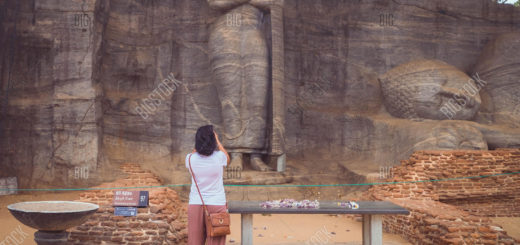Our History – Chulodara-Mahodara & Sinhala Buddhists in Jaffna


The 3rd Buddha’s relics in Sihale are in Nagadipa. The 1st were located in Thiriyaya & Mahiyanganaya. To avert an eminent war between Naga kings Chulodara & Mahodara, Buddha intervened, making this his 2ndvisit to Sihale. The two were fighting over a gem-studded throne. They both saw the power Buddha yielded and in turn offered the gem-studded throne to Buddha.
Buddha arrived to Sihale from Jetawanarama with deity Samidri Sumana holding the uprooted tree (Rajayathana tree) as an umbrella (parasol) to him. Buddha preached to the Nagas about the importance of life. The Naga King Maniakkitha, ruler of Kelaniya, moved by the compassion of the Buddha, thanked him profusely for settling the dispute. Buddha offered the Rajayathana tree and this is what we currently worship as the Nagadipa Viharaya.
Jaffna was known as Dambakolapatuna in ancient times. This was an ancient Sinhala Buddhist haven. The 1st Tissamaha viharaya is also erected in Dambakolapatuna or Jaffna by Sangamitta theraniya, who arrived to Sihale with a branch of the sacred Sri Maha Bodhi. She descended to Dambakolapatuna. Tissamaha Viharaya was erected by King Devanampiyatissa.
By the time of King Saddhatissa, the greatest number of arahats were living at one time in Thunkudativu or Puwagudivaina near Nagadipa. Written evidence is available in the ancient texts of Saddhamma Alankaraya & Atuwa.
During the time of King Vasabha, a Minister by the name of Isigiriya governed Nakadiva and built Piyagukatissa temple at the place known as Badakara. This evidence is enshrined in the Vallipuram golden inscriptions. The largest number of dagobas are seen in Kantharodai (Kantharoda) in Jaffna.
In one of the Atuwa ancient texts it is mention that in Puwangu island alone that one arahat gave dana to 500 great arahats. Such were the many incidents of Buddhist activities in Dambakolapatuna in present day Jaffna. It is clearly evident that such Buddhist worship & shrines were prevailent because of the presence of Sinhalese who were occupying the peninsula. It was only after the Sinhalese were chased out of the area that the Buddhist sites, Buddhist artefacts and Buddhist practices fell to ruin & were not followed by the Tamils that invaded from South India. Had they been following Buddhism, these ancient sites would have been preserved and in better condition they are in today and certainly not be destroyed & have kovils erected on top of them.
The Sihale kings that ruled made sure the Buddhist relics and Buddhist stupas were protected. Sadly, the present political leadership have failed to uphold their legally bound duty. Todays, spineless leaders are even prepared to handover ancient sacred sites as political bargaining tools for their political survival.
Sihale is protected by the relics of Buddha. These are the divine powers that protect our nation still and guard the nation and those that follow Buddha’s teachings. Buddha is protecting Sihale and it is the duty of all Sinhala Buddhist to protect the Buddha Sasana. Buddha declared that his Sambuddha Sasanaya is prevalent in Sihale and this itself should inspire each of us Sinhala Buddhist to ensure we unite to protect this pin bima – පිං බිම. Uphold your duty to the Sasana – that is Buddha’s wish.
- Arunasiri Kottegoda







